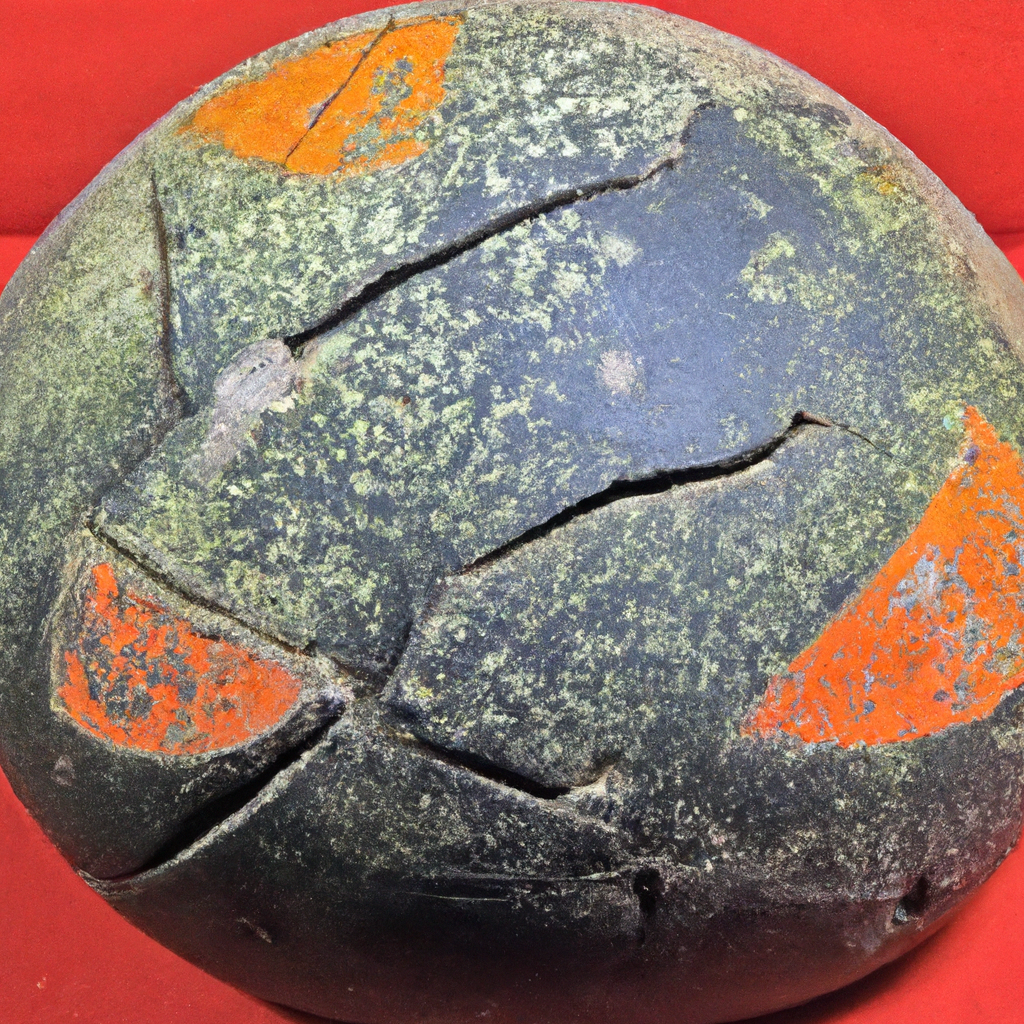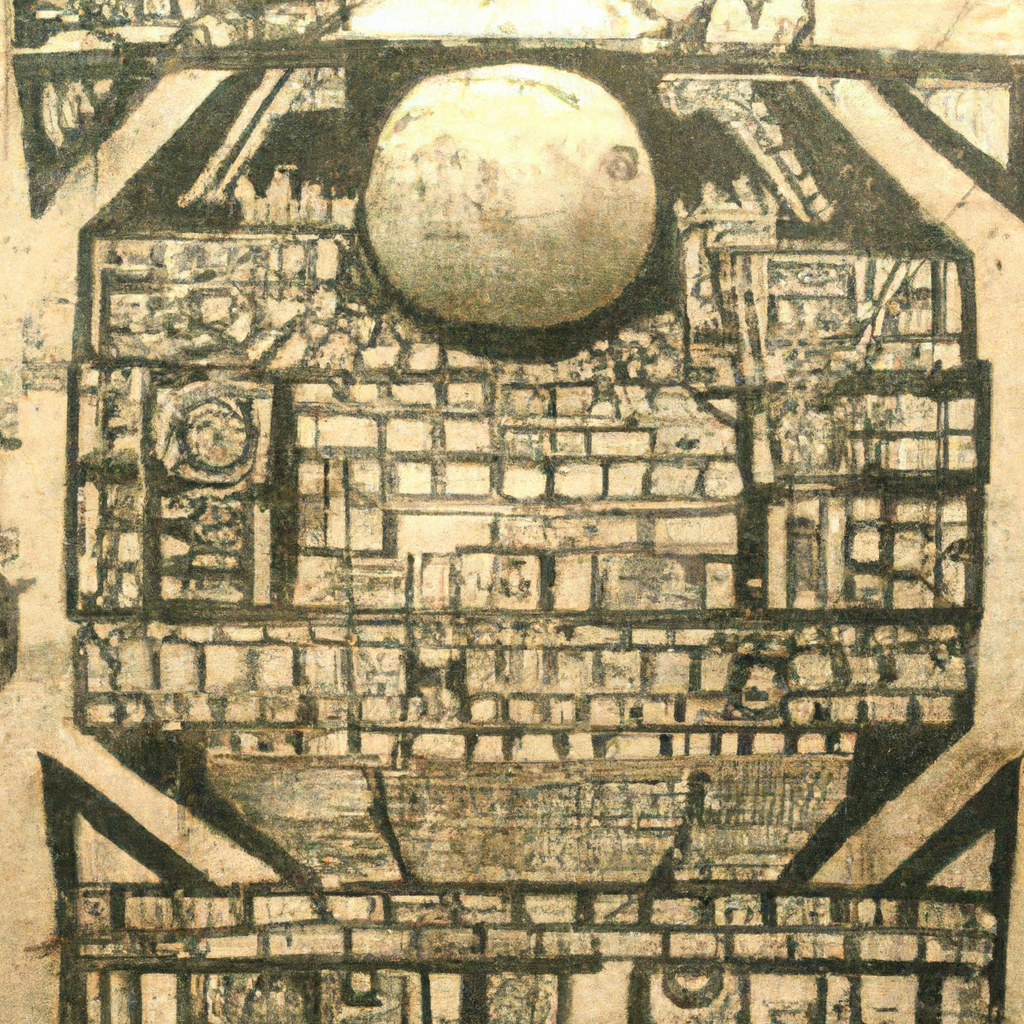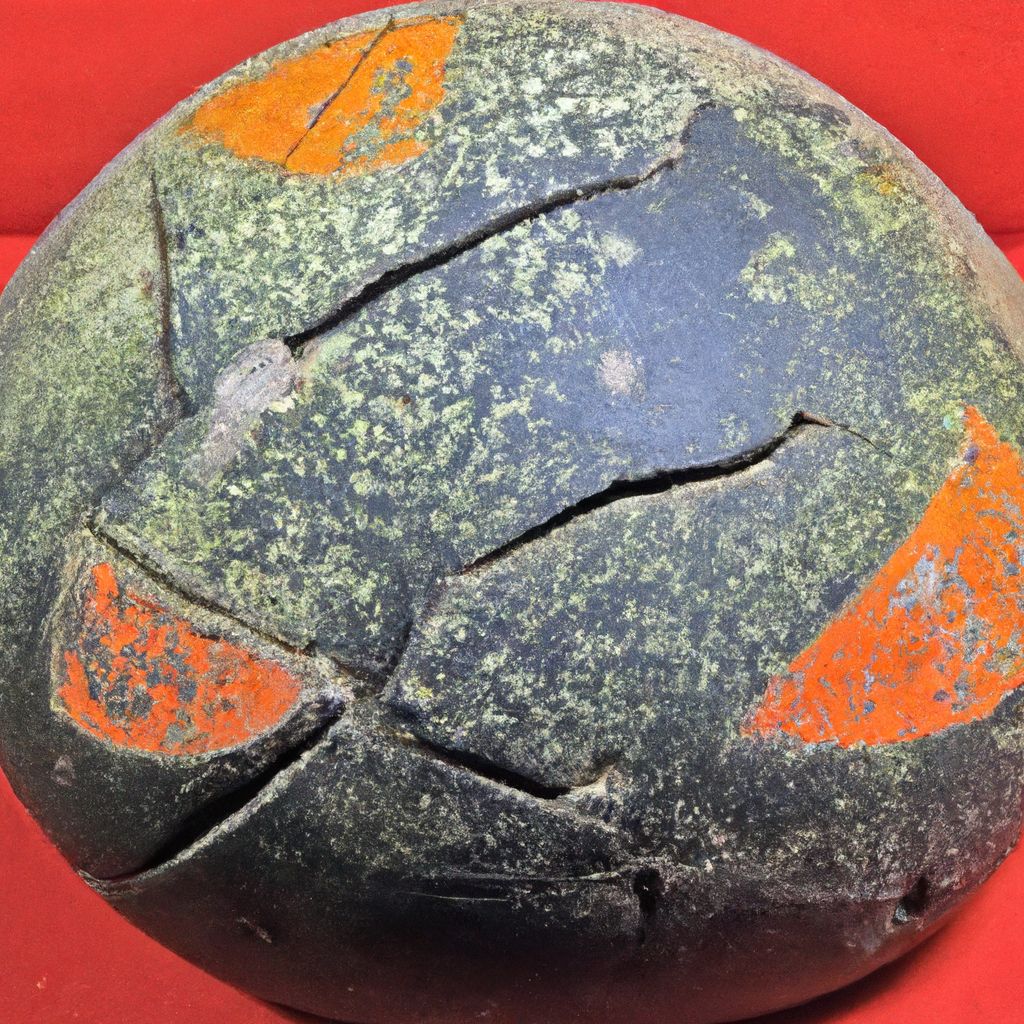Imagine traveling back in time to the ancient civilizations of Mesoamerica, where a unique and mysterious sport captured the attention of its people. Our article, “Unveiling the Secrets of the Mesoamerican Ballgame,” takes you on a journey to uncover the secrets and complexities behind this fascinating game. From the intriguing rules and rituals to the deeper cultural significance, get ready to explore the enigmatic Mesoamerican ballgame and gain a glimpse into the world of ancient sports.

Origins of the Mesoamerican Ballgame
The Mesoamerican Ballgame is believed to have originated around 1400 BCE, making it one of the oldest organized sports in history. Early forms of the game were played by indigenous peoples across Mesoamerica, including the Olmecs, Mayans, and Aztecs. These ancient civilizations developed their own variations of the game, each with its own unique rules and rituals. The ballgame held immense cultural significance and played a vital role in Mesoamerican society.
Early forms of the ballgame
The early forms of the Mesoamerican Ballgame differed from region to region. The Olmecs, known as the “Mother Culture” of Mesoamerica, were the first to play a rudimentary version of the game, using rubber balls and stone courts. The Mayans introduced more complex rules and rituals, creating a more formalized version of the game. The Aztecs later refined the Mayan rules and added their own flair to the game, incorporating elements of warfare and religious rituals.
Cultural significance of the ballgame
The Mesoamerican Ballgame held immense cultural significance for the ancient peoples of Mesoamerica. It was not just a mere sport but a sacred tradition deeply intertwined with religion, politics, and the economy. The ballgame was often seen as a symbolic representation of cosmic battles between the forces of light and darkness, the struggle of life and death.
Evolution of the game over time
The Mesoamerican Ballgame underwent several transformations over time. While the basic objective of getting the ball through a stone hoop remained consistent, different civilizations introduced various rule changes and innovations. The game became more ritualized and infused with religious symbolism, emphasizing the connection between the mortal and divine realms. The Aztecs, in particular, elevated the ballgame to a higher level of spectacle and grandeur, weaving it into lavish festivals and ceremonies.
Playing the Mesoamerican Ballgame
Game equipment and materials
Playing the Mesoamerican Ballgame required specialized equipment and materials. The most important item was the solid rubber ball, which varied in size and weight depending on the region and version of the game. Players wore protective gear, such as padded hip pads and yokes, to reduce injuries caused by the impact of the ball. The game was typically played on stone ballcourts, which were large, rectangular structures with sloping walls and stone rings positioned high above the ground.
Game rules and objectives
The objective of the Mesoamerican Ballgame was to score points by getting the ball through the stone hoop without using hands or feet. Players used their hips, elbows, and knees to strike the ball and propel it towards the hoop. The game consisted of multiple rounds, and the team with the most points at the end would emerge victorious. Each civilization had its own set of rules, but the central concept remained consistent across Mesoamerica.
Skills required to play the game
Playing the Mesoamerican Ballgame required a unique set of skills. Players needed to possess excellent hand-eye coordination, agility, and physical strength. Mastery of body control and precise ball manipulation were essential in order to accurately strike the ball towards the hoop. The game also demanded strategic thinking and quick decision-making, as players had to anticipate and react to the movements of both opponents and teammates.
Role of the Ballgame in Mesoamerican Society
Religious and spiritual significance
The Mesoamerican Ballgame was deeply intertwined with religious and spiritual beliefs. It was believed to be a way to honor and appease the gods, who were closely associated with the game. The movements and actions of the players were seen as sacred rituals, and victories or losses in the game were interpreted as messages from the divine realm. The ballcourt itself was considered a sacred space, and ceremonies and offerings were performed before and after games to ensure favor from the gods.
Political and social implications
The ballgame held significant political and social implications within Mesoamerican society. It served as a platform for displaying strength, skill, and prowess, thus influencing the prestige and power dynamics among city-states and ruling elites. Participation in the ballgame was restricted to the upper classes and warriors, emphasizing the social hierarchy and reinforcing the privileged status of the ruling class. Victories in the game could lead to alliances, territorial gains, and increased influence over rival cities.
Economic aspects of the ballgame
The Mesoamerican Ballgame also played a crucial role in the economy of ancient Mesoamerica. The rubber used to make the balls was highly valued and traded extensively throughout the region. The production and distribution of rubber balls created economic opportunities and fostered cultural exchange among different Mesoamerican civilizations. Additionally, the popularity of the ballgame drew large crowds of spectators, contributing to local economies through the sale of goods and services during festive ballgame events.

Ballcourts and Architectural Structures
Design and layout of ballcourts
The design and layout of ballcourts varied across Mesoamerica, reflecting the unique architectural styles of different civilizations. However, certain key features were consistent. Ballcourts generally had a long, narrow shape, with sloping sidewalls and a flat, rectangular playing surface. The structures were strategically oriented to align with celestial events and astronomical observations. The placement of ballcourts within ancient cities also indicated their significance as prominent social and religious spaces.
Symbolism behind the ballcourt structures
The ballcourt structures held symbolic meaning in Mesoamerican culture. The sloping walls of the ballcourt represented the mountains encompassing the Mesoamerican cosmological landscape, while the stone hoop, known as the “ring of life,” symbolized the portal between the earthly and supernatural realms. The ballcourt itself was seen as a microcosm of the cosmos, reflecting the cycle of life, death, and rebirth.
Regional variations in ballcourt architecture
Different Mesoamerican civilizations developed their own unique styles of ballcourt architecture. The Mayans, for example, constructed elaborate ballcourts with ornate decorations and intricate carvings depicting mythological scenes. The Aztecs, on the other hand, favored a more austere and imposing architectural style, characterized by massive stone walls and simplified ornamentation. These regional variations in ballcourt architecture reflected the diverse cultural identities and artistic traditions of each civilization.
Mythology and Symbolism in the Ballgame
Gods and deities associated with the ballgame
The Mesoamerican Ballgame was closely intertwined with a rich mythology populated by gods and deities. Each civilization had its own pantheon, but certain gods, such as the Mayan Hero Twins and the Aztec deity Xochipilli, were universally associated with the ballgame. These deities were believed to have played a central role in the creation of the game and were invoked for protection and guidance during matches.
Mythological stories and legends
Mythological stories and legends played a crucial role in the ballgame’s symbolism and rituals. These stories often depicted epic battles between mythological beings and served as moral lessons or explanations for natural phenomena. The Popol Vuh, the sacred book of the Maya, contained a mythological narrative that was believed to reflect the cosmic struggle portrayed in the ballgame. Such legends not only entertained but provided a deeper symbolic context for the game and its rituals.
Symbolic elements in the game and its rituals
The Mesoamerican Ballgame was rife with symbolic elements, reflecting the ancient peoples’ worldview and beliefs. The ball itself, made from the sacred rubber tree, represented the sun, moon, and planets, symbolizing the celestial realms. The hoop symbolized the portal through which the ball could pass, connecting the earthly and supernatural realms. The game’s rituals, such as the use of body painting and wearing ceremonial costumes, further added to the symbolic significance of the ballgame as a sacred act.
Ballgame as Performance and Spectacle
Spectators and their role in the game
Spectators played a vital role in the Mesoamerican Ballgame. The audience consisted of both commoners and elites, who gathered to watch and cheer on their favorite teams. Spectators not only enjoyed the game as a form of entertainment but also participated actively by betting, chanting, and engaging in raucous cheering. The presence of a large and enthusiastic crowd created a festive atmosphere and heightened the spectacle surrounding the ballgame.
Celebrations and festivals centered around the ballgame
The ballgame was often the centerpiece of grand celebrations and festivals throughout Mesoamerica. These events were marked by elaborate rituals, music, dancing, and feasting. They provided an opportunity for different communities to come together in a spirit of unity and camaraderie. The ballgame, with its dramatic and athletic performances, captivated the attention and imagination of the people, creating a sense of collective identity and shared cultural heritage.
Theatrical elements and rituals during matches
Matches in the Mesoamerican Ballgame were not merely athletic contests but elaborate spectacles involving theatrical elements and rituals. Competing teams would engage in pre-match ceremonies, invoking the gods for blessings and divine favor. Players would wear colorful costumes and body paint, assuming the roles of mythological heroes or deities. The ballgame was conducted with great pomp and drama, making it a visually captivating experience for both players and spectators.
Ballgame as a Reflection of Life and Death
Ballgame as a metaphor for life’s journey
The Mesoamerican Ballgame was seen as a metaphor for the journey of life. The ball, representing the movement of celestial bodies, symbolized the cycle of birth, life, and death. The hoop, representing the portal to the afterlife, embodied the passage from the mortal world to the realm of the gods. Playing the ballgame was believed to mimic the struggles and challenges faced by individuals in their journey through life, reinforcing the concept of mortality and the transient nature of existence.
Sacred connections between the game and the afterlife
The ballgame held sacred connections to the afterlife in Mesoamerican belief systems. It was believed that successful play could secure the release of the souls of the deceased and guarantee safe passage to the divine realm. The ballcourt was considered a liminal space, a threshold between the earthly and supernatural realms, where the spirits of the dead could be appeased and honored. Rituals and offerings were performed to ensure the favor of the gods in the afterlife.
Human sacrifices and rituals related to the ballgame
In some instances, the Mesoamerican Ballgame was associated with human sacrifices. There is evidence to suggest that elite players participated in sacrificial rituals following particularly important matches. These sacrifices were seen as offerings to the gods, ensuring victory, and reinforcing the connection between the mortal realm and the divine. The practice of human sacrifices further highlights the intense religious fervor and ritualistic nature of the ballgame.
Diffusion and Legacy of the Mesoamerican Ballgame
Spread of the game across Mesoamerica
The Mesoamerican Ballgame spread across the region, influencing and integrating into the traditions of various civilizations. It is believed that the game spread through trade networks, cultural exchange, and conquest. While the Olmecs were the earliest known practitioners of the ballgame, the Mayans and Aztecs expanded its reach through their extensive empires. The game’s popularity and cultural significance ensured its diffusion and adoption by different Mesoamerican cultures.
Influence on later Mesoamerican cultures
The Mesoamerican Ballgame had a profound influence on later Mesoamerican cultures. The Mayans, in particular, not only inherited the game but also further developed it into a complex and sophisticated sport. Mayan ballcourts and associated rituals became more elaborate, and the game continued to be played long after the decline of other Mesoamerican civilizations. The cultural impact of the ballgame extended to art, architecture, and religious practices, leaving a lasting legacy in Mesoamerican society.
Survival of the ballgame traditions in modern times
While the Mesoamerican Ballgame declined after the Spanish conquest, traces of its traditions still survive in modern times. Indigenous communities in Mesoamerica continue to preserve their cultural heritage by practicing variations of the ballgame. These modern versions often incorporate both traditional and contemporary elements, serving as a link to their ancestral past. Efforts are being made to revive interest in the ancient sport, ensuring the survival and continuation of the ballgame traditions for future generations.
Technological and Scientific Discoveries
Recent archaeological findings related to the ballgame
Archaeological excavations have unearthed valuable artifacts and structures related to the Mesoamerican Ballgame. Recent discoveries have shed light on the importance of the ballgame in Mesoamerican culture, with artifacts such as ballgame equipment, ceramic figurines depicting players, and murals depicting ballgame scenes. These findings have provided valuable insights into the game’s development, regional variations, and the social and religious aspects associated with it.
Chemical analysis of ballgame equipment
Chemical analysis has also played a significant role in understanding the Mesoamerican Ballgame. Researchers have conducted studies on the rubber used to make the balls, examining the chemical composition and its significance in Mesoamerican society. By analyzing the residues left on ancient equipment, scientists have gained insights into the production techniques, trade networks, and the ritualistic use of the rubber in connection with the ballgame.
Experimental reconstructions and simulations
To gain a deeper understanding of the Mesoamerican Ballgame, researchers have participated in experimental reconstructions and simulations of the game. By using replicas of ancient ballcourts, balls, and equipment, scientists have been able to recreate the gameplay and test different theories and hypotheses. These experimental reconstructions have provided valuable information about the rules, strategies, and physical demands of the game, enriching our understanding of this ancient sport.
Preserving and Interpreting the Mesoamerican Ballgame
Challenges in preserving ballgame artifacts
Preserving ballgame artifacts poses significant challenges due to factors such as natural decay, climate, and looting. The organic materials used in making the rubber balls are particularly vulnerable to decomposition, making their preservation a complex task. Additionally, looting and illegal trade of ballgame artifacts contribute to the loss of valuable cultural heritage. Adequate funding, strict legislation, and international cooperation are essential in preserving and protecting the remaining ballgame artifacts.
Interpreting the symbolism and meaning of the game
Interpreting the symbolism and meaning of the Mesoamerican Ballgame poses challenges due to the limited written records from the time. Researchers rely on archaeological evidence, mythological texts, ethnographic studies, and comparative analysis to unravel the cultural significance of the game. Collaborations between archaeologists, historians, anthropologists, indigenous communities, and descendants of Mesoamerican civilizations are vital in order to gain a comprehensive understanding of the ballgame’s symbolism and its place within Mesoamerican society.
Collaborations between researchers and indigenous communities
Collaborations between researchers and indigenous communities are essential in preserving and interpreting the Mesoamerican Ballgame. Indigenous communities hold valuable traditional knowledge and cultural practices related to the game, passed down through generations. Engaging in dialogue and mutual respect allows researchers to access this invaluable indigenous knowledge, lending a more nuanced and accurate understanding of the ballgame. Such collaborations ensure that the cultural heritage associated with the ballgame is conserved, respected, and effectively communicated to future generations.
